Refine search
Actions for selected content:
176 results
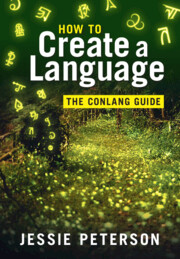
How to Create a Language
- The Conlang Guide
- Coming soon
-
- Expected online publication date:
- October 2025
- Print publication:
- 02 October 2025
-
- Textbook
- Export citation
1 - Early English Inscriptions, Glosses and Documents
- from Part I - The Textual Record
-
-
- Book:
- The New Cambridge History of the English Language
- Published online:
- 18 October 2025
- Print publication:
- 16 October 2025, pp 27-49
-
- Chapter
- Export citation
When adding a little is adding too much: how discourse particles force immediate reanalysis and increase processing costs in under-specific contexts
-
- Journal:
- Language and Cognition / Volume 17 / 2025
- Published online by Cambridge University Press:
- 26 August 2025, e66
-
- Article
-
- You have access
- Open access
- HTML
- Export citation
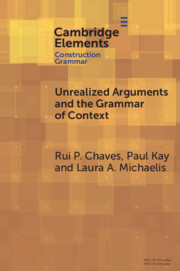
Unrealized Arguments and the Grammar of Context
-
- Published online:
- 31 July 2025
- Print publication:
- 04 September 2025
-
- Element
- Export citation
The language of non-journalistic true crime podcasts: A preliminary analysis of the pragmatic markers in True Crime Obsessed
-
- Journal:
- English Today , First View
- Published online by Cambridge University Press:
- 30 May 2025, pp. 1-11
-
- Article
-
- You have access
- Open access
- HTML
- Export citation
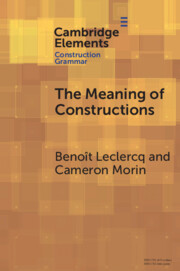
The Meaning of Constructions
-
- Published online:
- 16 May 2025
- Print publication:
- 22 May 2025
-
- Element
- Export citation
Scalar diversity and second-language processing of scalar inferences: A cross-linguistic analysis
-
- Journal:
- Bilingualism: Language and Cognition , First View
- Published online by Cambridge University Press:
- 07 May 2025, pp. 1-13
-
- Article
-
- You have access
- Open access
- HTML
- Export citation
2 - Persuasion, Manipulation, Seduction
- from I - (Re)framing Persuasion
-
-
- Book:
- Manipulation, Influence and Deception
- Published online:
- 10 June 2025
- Print publication:
- 24 April 2025, pp 19-42
-
- Chapter
- Export citation
1 - Introduction
-
- Book:
- Language and Politics
- Published online:
- 20 February 2025
- Print publication:
- 27 February 2025, pp 1-12
-
- Chapter
- Export citation
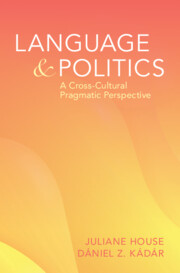
Language and Politics
- A Cross-Cultural Pragmatics Perspective
-
- Published online:
- 20 February 2025
- Print publication:
- 27 February 2025
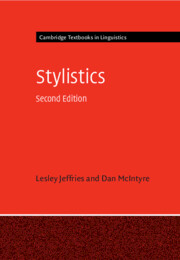
Stylistics
-
- Published online:
- 18 February 2025
- Print publication:
- 09 January 2025
-
- Textbook
- Export citation
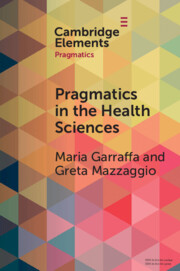
Pragmatics in the Health Sciences
-
- Published online:
- 06 February 2025
- Print publication:
- 06 February 2025
-
- Element
- Export citation
Individual variability and the H* ~ L + H* contrast in English
-
- Journal:
- Language and Cognition / Volume 17 / 2025
- Published online by Cambridge University Press:
- 09 January 2025, e9
-
- Article
-
- You have access
- Open access
- HTML
- Export citation
4 - Discourse and Context II
-
- Book:
- Stylistics
- Published online:
- 18 February 2025
- Print publication:
- 09 January 2025, pp 113-145
-
- Chapter
- Export citation
1 - Methods in Conversation Analysis
- from Part I - Introduction
-
-
- Book:
- The Cambridge Handbook of Methods in Conversation Analysis
- Published online:
- 06 December 2024
- Print publication:
- 05 December 2024, pp 3-48
-
- Chapter
- Export citation
The distribution of non, nenny and non fait in Pre-Classical and Classical French
-
- Journal:
- Journal of French Language Studies / Volume 34 / Issue 3 / November 2024
- Published online by Cambridge University Press:
- 16 September 2024, pp. 431-456
-
- Article
-
- You have access
- Open access
- HTML
- Export citation
8 - Pragmatics
-
- Book:
- A Practical Guide to Second Language Teaching and Learning
- Published online:
- 03 May 2024
- Print publication:
- 30 May 2024, pp 163-185
-
- Chapter
- Export citation
1 - Language Acquisition
-
- Book:
- A Practical Guide to Second Language Teaching and Learning
- Published online:
- 03 May 2024
- Print publication:
- 30 May 2024, pp 1-21
-
- Chapter
- Export citation
5 - Context and Pragmatics
-
- Book:
- The Philosophy of Theoretical Linguistics
- Published online:
- 25 April 2024
- Print publication:
- 02 May 2024, pp 108-136
-
- Chapter
- Export citation
8 - A Toolbox of Methods for Gesture Analysis
- from Part II - Ways of Approaching Gesture Analysis
-
-
- Book:
- The Cambridge Handbook of Gesture Studies
- Published online:
- 01 May 2024
- Print publication:
- 18 April 2024, pp 182-216
-
- Chapter
-
- You have access
- HTML
- Export citation
